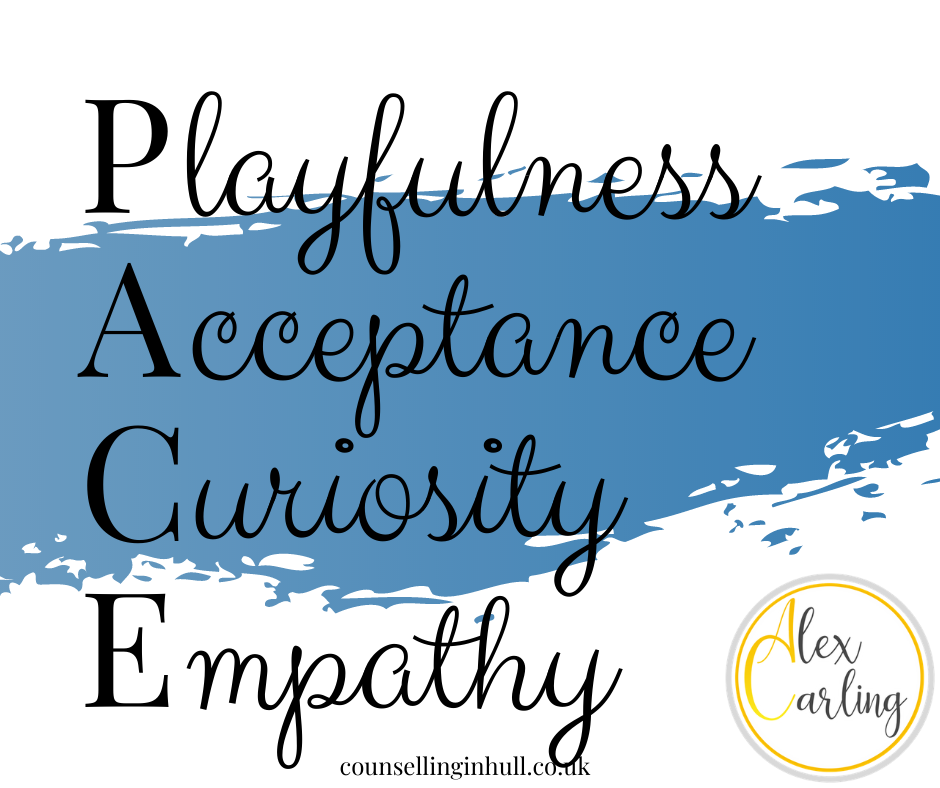Four ways to speak to your children when they’re playing up.
Coined by clinical psychologist, Dan Hughs, PACE was originally developed as a way of being in relationship with fostered and adopted children; it’s main focus is to build on connection and to create a safe space for communication. PACE is widely used for all children as a way of facilitating emotional development, identity, self-expression and compassion.
💛 PACE is a way of being in relationship with our children, it is great for children that have experienced trauma in relationships
💛 PACE is great for children that haven't experience trauma
💛 PACE allows you to enforce boundaries in such a way that is gentle and doesn't trigger a shame response or defence of it i.e. defending with anger.
💛 PACE gives you a mindset which facilitates patience, consistency and containment
💛 PACE allows you to validate your child and their experience
💛 PACE allows you to explore whilst allowing your child to listen and observe - there's no expectation for them to know or answer your questions
💛 PACE allows our children to feel seen and OK whilst having feelings that overwhelm them
Playfulness
When your child is acting out (communicating without words) in a way that is rude, hurtful and/or aggressive and you know that they have some emotional stuff going on - confront their behaviour in a playful way.
If they bark an order at you or tell you to ‘go do one’ for example - you could say "don't speak to me like that" and "keep talking to me like that and you'll go upstairs".
These responses can create a bigger void between you both than what their emotional overwhelm already has, it comes with a message "you and your overwhelm are not OK/welcome".
Being playful in your response is not letting them off or being soft, it is a therapeutic use of yourself - doing and saying something with the intention of meeting their need in that moment.
Being playful lets them hear you without shame and can defuse anger and irritation.
Try saying something like "computer does not understand, please try again" in your best computer voice or pretend what they said is hurting your ears in an exaggerated dying swan kind of way.
Being playful notices the behaviour, it says "try again please" and it tells them "we don't speak to each other like that". It also creates space and containment for their struggle and overwhelm.
Remember that our children struggle to do usual relationship things when they are feeling overwhelmed because they lose their access to their executive brain functioning. Wait until your child is feeling emotionally grounded and safe before exploring what was going on with them.
Acceptance
It can be difficult to accept what we don't understand, can you accept that you don't have all the answers?
When we don't accept, we can put energy in trying to understand instead, and that can leave us feeling stuck and helpless.
When we see our children with a need but don't know what it is, we can still be with them in whatever it is, if we accept the moment.
If we accept their unknown need and our inability to fix it - what do we do then? We can connect, be present, we can let them know we see them and their discomfort 'looks like you're really going through something at the moment..'
Accepting means we don't enter a power struggle, with ourselves to perform and with them as we are not asking them to have the answers of change to make life or the situation easier - we simply be, together, sometimes with frustration, sometimes with sadness, sometimes with overwhelming confusion but this allows them to pass through.
A power struggle can mean they leave their process with parts unresolved, which means it isn't finish and will return. Parts may be unresolved as energy has been redirected in the fight with you or because they have adapted and succumbed to your need for them to be OK again, so they push it down.
Try this, when your child is displaying/acting something you don't understand...
Notice your discomfort at their discomfort
Breathe
Tell yourself 'this is where we are right now, and that's OK'
Breathe again and tell yourself 'I am a good enough parent' and 'their emotion is OK and it's OK for neither of us to get it right now, I can still be there for them'
Be with them and yourself
Curiosity
At the point that we identify something is going on for our small or younger ones (PACE works in relationship with all ages) curiosity can be used instead of questioning.
Questions need an answer, they put expectation onto the child and can sometimes trigger a shame response which may be withdrawal and possibly anger.
Can you remember doing something when you were young and being asked 'what did you do that for?' and when you answered 'I don't know', you were told 'well you did it, you must know'?
I remember it well.
I remember feeling like a rabbit in the headlights, I remember my stomach churning as I'm face to face with my parent's disappointment and frustration.
Sometimes children do not know why they did it.
It's developmentally appropriate for small children to struggle with impulse control and remembering that when we are feeling overwhelmed, how we lose executive functioning of our brain - all children, teens and adults, may find themselves acting in a way that normally, they would make efforts not to. Normally, their language, empathy and problem solving skills are not compromised but when overwhelmed they are.
Instead of questioning, we can use curiosity - we can wonder instead of ask. When we wonder, we are sharing our thinking, creating dialogue, validating whatever it is they are experiencing, seeing them and giving a message that 'it's OK for us to not to know, I'm here and what ever you are thinking and feeling - it's OK to learn how to figure this out'.
Last week our 4 year old said to me that her body was feeling different, when I stopped getting ready and went down to her level and asked what she meant, she said that sometimes her tummy is hurting. I explained that sometimes our body tries to speak to us and tell us things, I said 'I wonder what your body could be telling you...'
She didn't know, and I couldn't know for sure but considering she's starting school for the first time in a week's time, I had a pretty good idea so I was able to use that and be curious about it.
I wonder if your body knows that you're starting school soon and I wonder if it's getting a little bit nervous because it's so new...
When using curiosity, it's helpful to remember:
We don't need them to respond
Our curiosity doesn't need validation
It's OK for us to be wrong; we're not telling them, we're wondering
It's particularly useful when you have a good idea what's happening but also...
You can notice and wonder what's happening, without allocating it to a situation i.e. 'I've noticed you're....recently, I wonder if you're having some jumbled up feelings about something, I notice this happens sometimes when....'
Using Curiosity to understand relationship with peers:
This is also useful when our children are struggling with their peers - let's not excuse unkind behaviour but keep talking with our children in ways that helps them understand differences and gives permission for other's to struggle too. Understanding doesn't excuse harm (emotional or physical) but it can help us understand it's not an 'us' thing - then work on what boundaries are needed.
Empathy
By definition: the ability to understand and share the feelings of another.
When we show our children empathy, we go side-by-side with what they are expressing. We feel their sadness, fear and distress.
Aligning with their emotions doesn't mean we have to mirror their behaviour (remembering behaviour is a form of communication). We can use our tone of voice, our facial expression, our open bodies and space.
When we do this, we show them that we understand what it's like to feel those feelings, that they (the feelings and themselves) are OK, that they are not alone and we will be here until they need us to be.
It may be useful to imagine your child when they were a baby (or if they came to you a little later, imagine them as they were a baby), were you phased then when they arched their back in protest or pain (I'm thinking teething)? Did you scoop them up, show their pain on your face, express compassion and tell them how you know it's hard/hurting? This is an example of all the above and often, because of their biological age today, we think our children don't need us like this anymore - but at times, they do.

